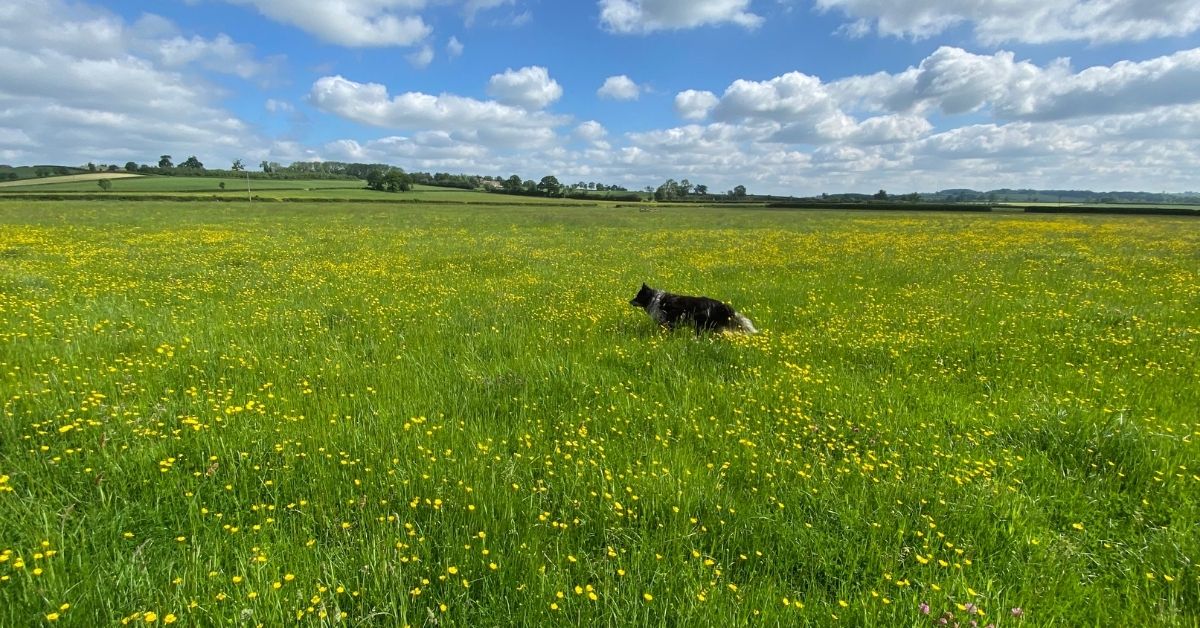Meg's Musings: My Love Hate Relationship with Summer

The winters, particularly of late, have been interminable. Seemingly starting in September and still giving us anxiety about the cold, excessive wet, excessive dry, excessive cold up to and including May this year. 8 months of miserable weather.
So, when the weather finally breaks and you can step out onto the farm without a coat on, I think we all start to feel better about things.
For a little while anyway.
The lack of rain was a major concern for us in early spring, which is ridiculous after a winter so wet, I thought the sheep might float off downstream.
The dry weather persisted throughout March and April and nothing wanted to grow. By the start of May, our concern about the lack of rain was changing to a tangible fear that we were going to have a repeat of the drought in 2018. Combine this prolonged dry spell, caused by the bulk of our weather unusually coming from the East, with the bitter cold from this Siberian weather system- and you have a perfect storm for an arrested spring.
Finally, May arrived, and with it, rain. But not warm spring rain, typical of a British spring, but bitingly cold rain, sleet and hail.
We lambed in May this year to take advantage of the warmer weather and enhanced grass growth that typifies this lovely month, but it wasn’t to be. Despite our best efforts we still lost 20+ lambs to cold and exposure. Heart-breaking.

Better late than never
As flaming June arrived, we were cheered by a change of weather system, the high pressure and more typical weather influence from the west warmed everything up and everything roared into action. The hedgerows, peppered only with blackthorn blossom throughout April, were heavy with May blossom and unfurling leaves, the verges were thick with cow parsley and wildflowers. Its almost as if Mother Nature were holding her breath until things improved. More importantly for us perhaps, the grass has also gone mad, boosting milk production for our lambs and calves, who are growing apace and enjoying the warmth.

Short lived joy
So, what’s not to like about Summer?
Well, heat and flies.
I appreciate flies are an amazing food source for birds like Swallows, but some species are just the most revolting, cruel little blighters. Barely a week into the warm weather and we had our first case of flystrike, a perfectly clean ewe was struck in the middle of her back, the maggots fanning out across her flanks, causing damage and distress to the poor girl. Luckily caught, sheared, and treated in plenty of time, but the speed at which these creatures take hold is stomach turning. Unfortunately, because we lamb late, we also must shear late, and this is giving us all massive anxiety. Every twitch or stamp of a hoof is investigated for wrigglers, and with 900 ewes and 1500 lambs… that is a full-time job in itself.
The heat builds and distresses the sheep and cows, desperate to get away from the oppressive warmth. The heat that we craved for so long in our artic spring is now causing us to be gripped once again by a prolonged dry spell.
In stark contrast to the rest of the country, awash with excessive rainfall, our ground is cracking and desperate for consistent rainfall.
Our herbal leys, sown in May, have barely grown, desperate for water in our heavy clay soil.

Rest and Recouperation
However, it’s not all doom and gloom. Our long-established leys, permanent pasture for many years and allowed for once to grow unchecked in a change of land management that we have implemented, is teaming with life. The warm dry weather favours the pollinators. Clouds of butterflies, hordes of bumble bees and squadrons of hoverflies are utilising the waist high grass and clovers in the hay meadows, which, until now, have been almost continually grazed for the last decade.
It amazes me what plants appear in these types of meadows when given a chance. The pasture needs work, but the biodiversity will improve as we factor in long periods of rest, intense periods of grazing and pay close attention to plant and wildflower life cycles. I don’t even mind the slight proliferation of thistles. This will balance out in time and for now are an amazing food source for butterflies.
Over the last 10 years, but particularly the last five, the importance to us of rest and recovery of land has been brought into sharp focus. Rest is probably the greatest tool you have. Holding your nerve and not interfering is a great skill to learn. We now have the mantra that ‘most of the fields need to be empty, most of the time.’
After walking these fields in winter, squelching across grass so short that I couldn’t see that it would ever recover, to now, the height of summer, wading through thick meadows, rich in life, is a great reminder of the power of the seasons, and the warm months in particular, to restore nature.
Maybe summer isn’t so bad after all.
Meg

About the author: I’m Meg, an opinionated farmer’s wife, who is passionate about animal welfare, the environment and wholesome food.
